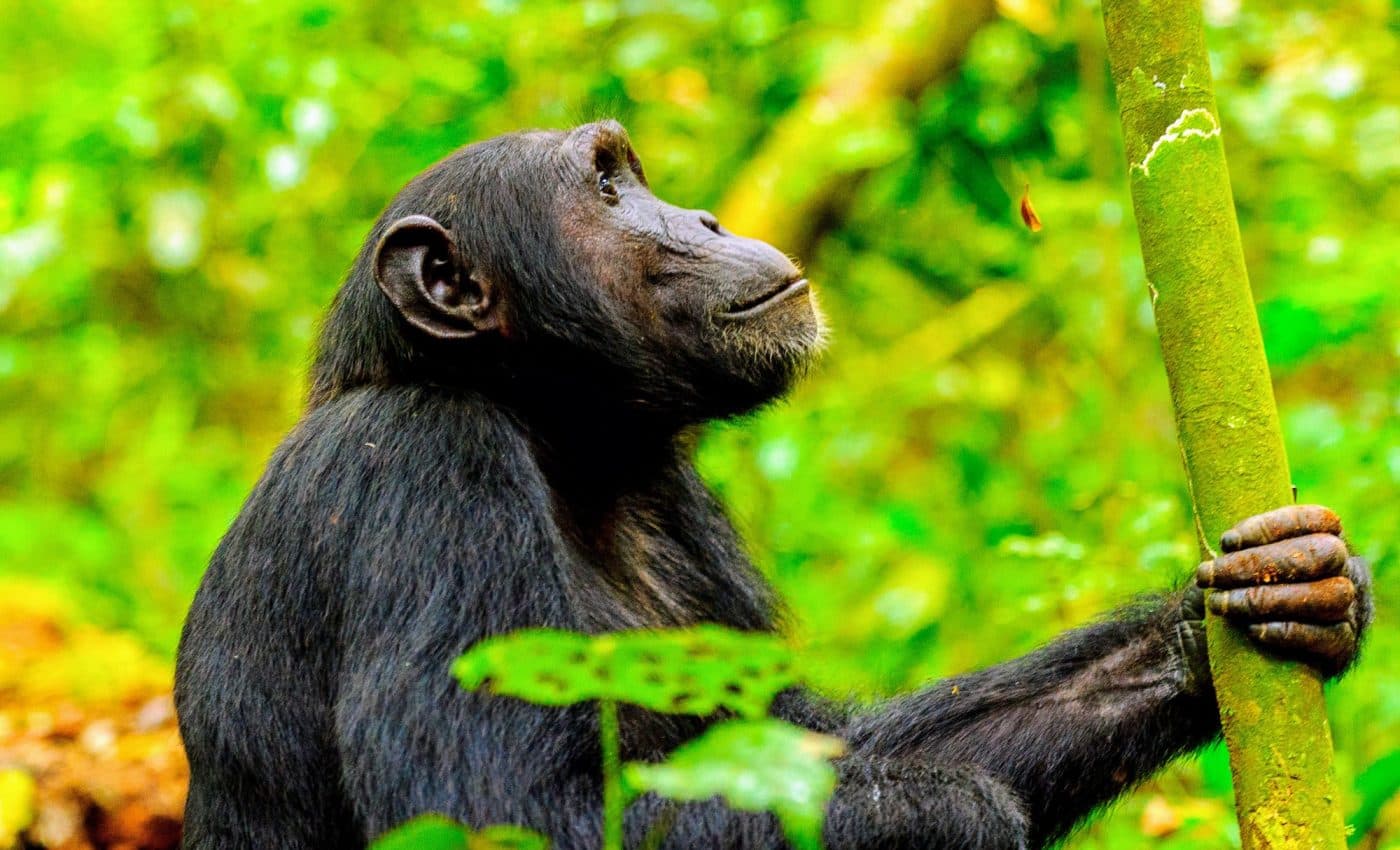The chimpanzee was ill, suffering from diarrhea and tapeworms—conditions not uncommon for a wild chimpanzee in the Budongo Forest of Uganda.
What captured the attention of the observing research team was the chimp’s response to its ailment.
Shortly after showing symptoms, the male chimpanzee, accompanied by two others, traveled from its community’s home to a specific area in the forest with a particular type of tree. There, it collected dead wood from the Alstonia boonei and chewed on it.
This plant has long been used in traditional medicine, and when the researchers tested it, they confirmed that it possesses high antibacterial and anti-inflammatory properties. The chimpanzee made a full recovery.
This behavior was one of many observed over eight months, suggesting that chimpanzees might be utilizing the forest as a natural medicine cabinet.
The study found that chimpanzees were consuming a variety of plants with medicinal effects but minimal nutritional value, often when facing health issues like injuries or parasites.
The researchers emphasized the significance of these findings, noting that they strongly support “novel self-medicative behaviors in wild chimpanzees.”
They added that further investigation into these behaviors could “benefit our own species, potentially leading to the discovery of novel human medicines.”
Schultz indicated that the next phase of investigation will focus on the “most interesting plant extracts” consumed by the chimpanzees.
He acknowledged that there are many uncertainties but suggested that “one day the knowledge of chimpanzees could save human lives.”
Schultz is particularly interested in looking for the potential applications of the plants used by chimps in addressing antibiotic-resistant bacteria and chronic inflammatory diseases, although he noted that there is a long path from this study to any potential drug breakthroughs.
The team observed two chimpanzee communities in the Budongo Forest for four months each, tracking their dietary habits and analyzing components of 13 plant species that appeared unappealing to chimpanzees, such as bark and resin, to assess their healing effects.
“Pharmacological results suggest that Budongo chimpanzees consume several species with potent medicinal properties,” the researchers wrote.
Those with the highest parasite burdens—determined through fecal tests—had consumed plant materials with the strongest antibacterial properties.
An injured chimpanzee had ingested a fern with anti-inflammatory effects, which was otherwise rarely eaten by the group.

Laboratory tests showed that all plant species inhibited bacterial growth of E. coli, and some had been previously found to possess cancer-fighting or analgesic properties.
The researchers noted that 11 of the 13 plant species had documented uses in traditional medicine.
The range of ailments that chimps turned to plants for, as well as the potency of these plants, surprised the researchers.
“Maybe it shouldn’t have been as much of a surprise,” Freymann said in an email, “because the chimpanzees are incredibly smart and it makes perfect sense they would have figured out by now which plants can help them when ill or injured.”
She added that it was “highly unlikely” that the chimpanzees were consuming medicinal plants merely by coincidence as part of their diet.
“In many cases, the ill or injured chimps specifically sought out these resources when no other member of their group did,” she noted.
This study adds to a growing body of research suggesting that some animals use plants or insects for self-medication.
Our closest relatives, the apes, have frequently featured in this field of study known as zoopharmacognosy.
Last month, scientists published an observation in the journal “Scientific Reports” of an orangutan in Indonesia applying the juice and chewed-up leaves of a medicinal plant to a facial injury, which healed without infection.
Two years prior, a separate study of chimpanzees in Loango National Park, Gabon, noted that the animals had been observed applying insects to wounds.
Isabelle Laumer, a primatologist and cognitive biologist at the Max Planck Institute of Animal Behavior in Germany, who led the orangutan report but was not involved in the “PLOS One” study, commented in an interview that the new study offers “really important findings” and opens up avenues for further research.
“It’s always very fascinating to discover that our closest relatives exhibit behaviors that we humans also show,” she said. “I think this study, once again, highlights the similarities we share.”
The authors of the “PLOS One” study have called for robust conservation efforts to ensure the continuation of such research and to look for its potential benefits for humans in identifying medicinal plants.
“It is imperative that we urgently prioritize the preservation of our wild forest pharmacies as well as our primate cousins who inhabit them,” they concluded.
